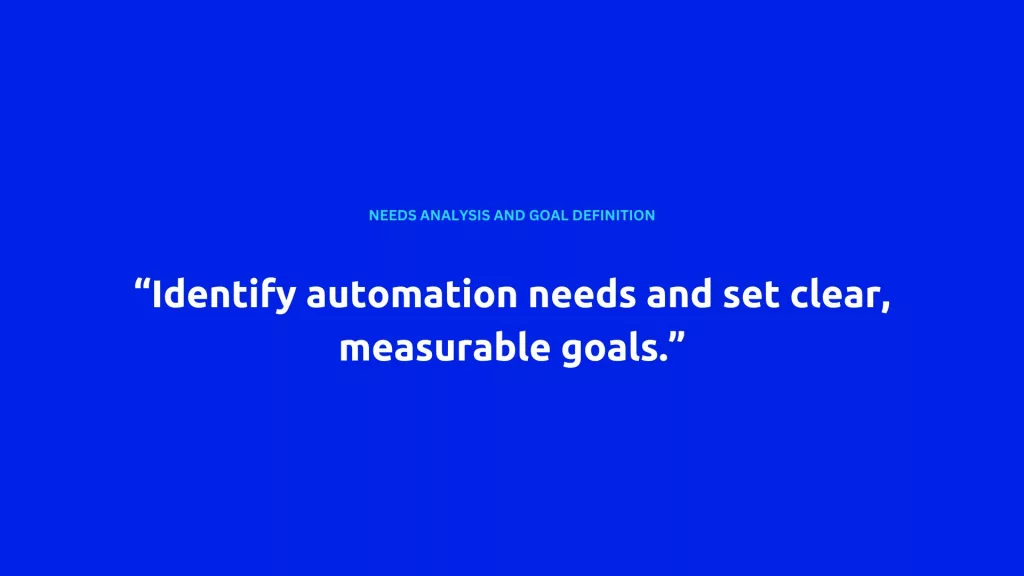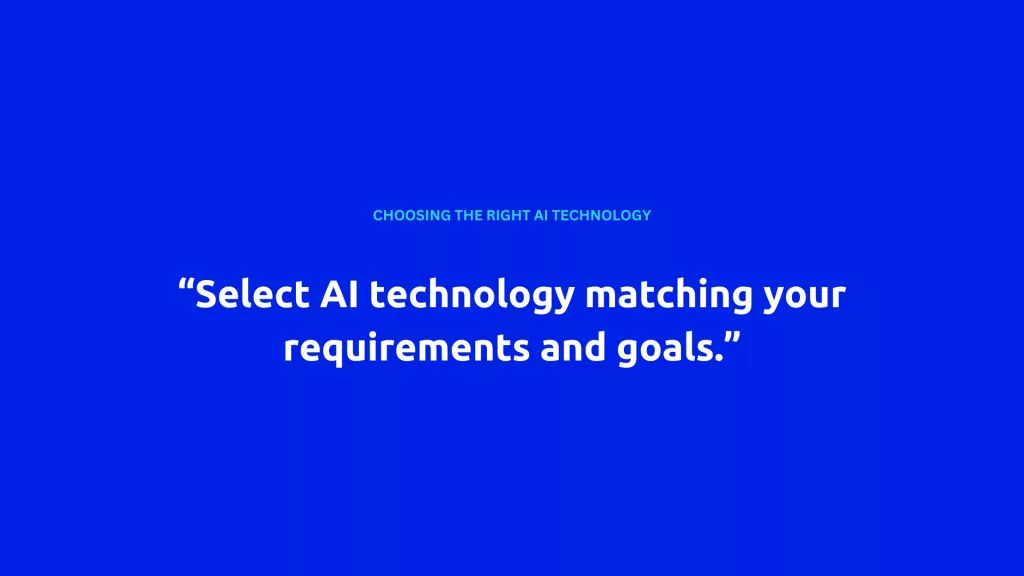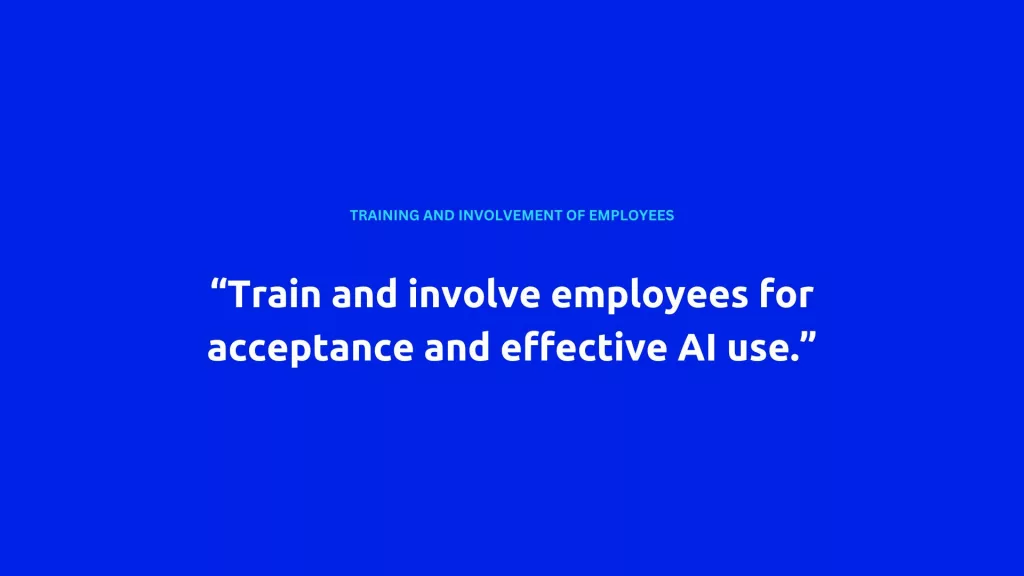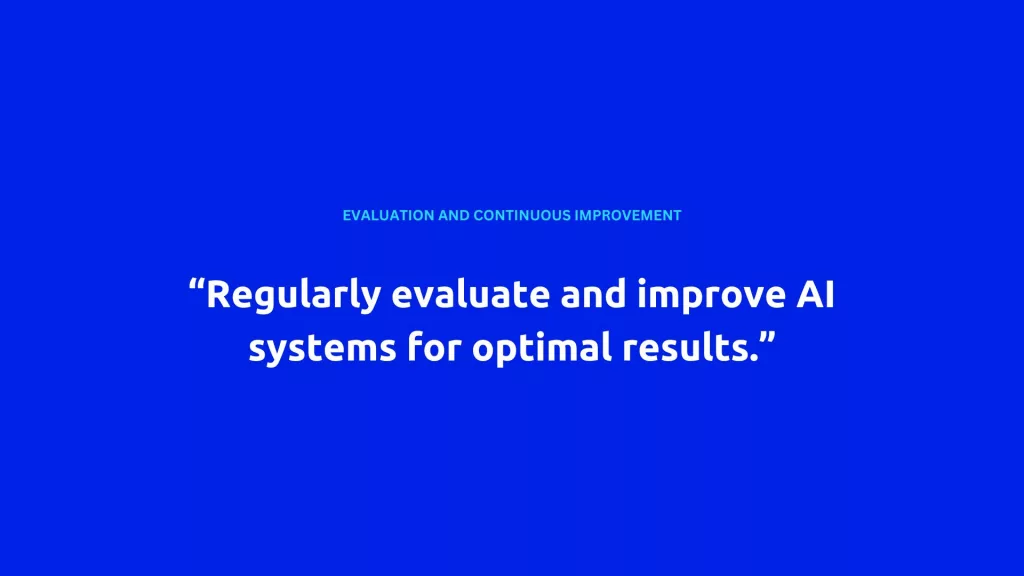Content Overview
Introduction
In today’s business world, process automation with AI has become a crucial strategy for increasing efficiency, reducing costs, and enhancing competitiveness. Artificial Intelligence (AI) enables companies to automate repetitive tasks, minimize human errors, and make data-driven decisions. In this article, we present seven proven tips on how to automate your processes with AI to achieve sustainable success.
1. Tip: Needs Analysis and Goal Definition

Before starting to automate processes with AI, it is important to conduct a thorough needs analysis. Identify the areas in your company that would benefit the most from automation. These could be repetitive and time-consuming tasks, for example. Define clear goals and success criteria for automating processes with AI. An example of this is a financial company automating the processing of loan applications to reduce processing time and increase accuracy.
An effective needs analysis includes several steps. First, document and evaluate all business processes in your company. Which processes are particularly time-consuming? Where do errors frequently occur? Which tasks could be made more efficient through automation? A thorough analysis helps you set the right priorities and drive automation in a targeted manner.
Additionally, set clear goals for your automation projects. What do you want to achieve? Do you want to increase efficiency, reduce costs, or improve customer satisfaction? Define measurable success criteria to evaluate the progress of your projects. An example of a clear goal could be reducing the processing time for loan applications by 50% or lowering the error rate in data processing by 75%.
2. Tip: Choosing the Right AI Technology

Choosing the right AI technology is crucial for the success of your automation projects. In recent years, particularly Large Language Models (LLMs) and Retrieval-Augmented Generation (RAG) have established themselves as powerful tools for automating business processes.
Large Language Models (LLMs)
LLMs, like OpenAI’s GPT-4, are advanced AI models that can understand and generate natural language. These models are trained to interpret human language and perform complex tasks such as text generation, translation, text summarization, and dialogue management. Here are some applications of LLMs in business process automation:
- Customer Support: LLMs can be used to operate automated response systems and chatbots that efficiently and accurately answer customer inquiries. An example is a customer service chatbot that automatically answers frequently asked questions, relieving the support team.
- Content Generation: Companies can use LLMs to create content for marketing campaigns, blog articles, or social media posts. This saves time and ensures that the content is consistent and engaging.
- Document Processing: LLMs can be used to automatically analyze documents and extract relevant information, which is particularly useful for processing large amounts of text data.
Retrieval-Augmented Generation (RAG)
RAG combines the capabilities of LLMs with additional information sources to generate more precise and context-based answers. This technology allows large amounts of data to be searched and relevant information retrieved in real-time. Here are some applications of RAG:
- Knowledge Management: RAG can be used to help employees find relevant information in extensive knowledge databases. This improves the efficiency and accuracy of information retrieval.
- Data Analysis and Reporting: RAG models can analyze complex data and generate meaningful reports by retrieving and combining relevant data points from various sources.
- Personalized Customer Interactions: By combining LLMs and RAG, companies can enable personalized interactions with customers by retrieving current and relevant information from customer databases and incorporating it into communication.
Selection Criteria for the Right Technology
When choosing the appropriate technology for process automation with AI, consider the following criteria:
- Requirements and Goals: Clearly define which tasks should be automated and what outcomes you expect. Choose the technology that best fits these requirements.
- Data Availability: Ensure that the necessary data is available in sufficient quantity and quality to make the best use of the AI models.
- Integration and Scalability: Check how well the AI technology can be integrated into your existing systems and whether it is scalable to meet future requirements.
- Costs and Resources: Consider the costs for implementing and operating the AI technology, as well as the required resources, including necessary infrastructure and expertise.
Selecting the right technology is often one of the most important steps in leveraging AI. Therefore, it may be advisable to seek advice from experts in process automation with AI.
3. Tip: Integration into Existing Systems

One of the biggest challenges in automating processes with AI is integrating new technologies into existing systems. A clearly defined integration is crucial to avoid disruptions in daily operations.
Integrating AI into existing systems requires careful planning and coordination. First, take stock of your current IT infrastructure. What systems and applications are already in use? How can these be connected with the new AI technologies? A thorough analysis of existing systems helps to identify and solve potential integration issues early on.
Integration of AI for process automation can be very deep or somewhat more autonomous. This decision should be made based on specific circumstances and can change over time. Integration itself has many facets. An example is the development of interfaces and APIs (Application Programming Interfaces) to enable communication between various systems. Close collaboration between the specialist departments and IT teams is essential to ensure that such an implementation runs smoothly.
Another example of integrating AI into existing systems is the use of databases and cloud platforms. Many AI solutions require access to large amounts of data stored in databases or cloud storage platforms. Ensure that your AI systems have access to the necessary data and that the data is in a suitable format.
4. Tip: Training and Involvement of Employees

The acceptance and involvement of employees is another important factor for the success of automating processes with AI. Offer training programs and continuous education to familiarize your employees with the new technologies and provide them with the skills they need to work effectively with AI systems. Involving employees from the beginning promotes acceptance and facilitates the implementation of automation projects.
Offer training and workshops to teach employees the basics of AI and its application in their work area. This can include both technical training for IT staff and practical training for specialist departments.
It is also important to involve employees in the planning and implementation process. By involving employees from the start, you can consider their concerns and suggestions, promoting acceptance of the new technologies. Open communication and transparency about the changes help reduce fears and increase employee motivation.
In this context, regular further training is also essential. Technologies like AI are constantly evolving, and it is important for your employees to be informed about the latest developments and best practices.
5. Tip: Ensuring Data Security and Privacy

When using AI for process automation, data protection plays a crucial role. Ensure that your AI solutions meet the highest security standards and that data privacy is guaranteed. Develop policies and best practices for handling sensitive data and ensure that all legal requirements are met.
This includes both technical measures such as encryption and access controls and organizational measures such as training and policies.
Ensure that all employees working with sensitive data are informed about applicable data protection regulations and comply with them. Implement regular training and awareness programs to promote awareness of data security and privacy.
Another important aspect is compliance with legal requirements. Ensure that your AI systems comply with applicable data protection laws and regulations, such as the General Data Protection Regulation (GDPR) in the European Union. Work closely with your data protection officer to ensure that all legal requirements are met.
6. Tip: Pilot Projects and Gradual Implementation

Start the automation of processes with AI with pilot projects. These allow you to test the technologies in a controlled environment and gain initial experience before introducing them throughout the company. An iterative approach, where process automation with AI is implemented gradually, minimizes risk and facilitates adaptation to unexpected challenges. A retail company could, for example, test automated warehouse management in one store before rolling out the solution to all stores.
Choose processes for pilot projects that are representative of your business processes and where AI automation can provide significant added value. Ensure that the pilot projects have clearly defined goals and success criteria to measure progress and results.
An iterative approach, where automation is introduced gradually, minimizes risk and facilitates adaptation to unexpected challenges. Start with small, manageable projects and gradually expand automation to other processes and departments. This approach allows you to flexibly respond to changes and new insights and continuously optimize automation.
7. Tip: Evaluation and Continuous Improvement

Automating processes with AI is an ongoing process that requires regular evaluations and adjustments. Develop methods for measuring success and establish feedback loops to enable continuous improvements. Analyze the performance of your AI systems and adjust them as needed to achieve optimal results.
The continuous evaluation and improvement of your AI systems is crucial for ensuring long-term success. Develop clear methods for measuring success and ensure that you regularly gather feedback from users and affected departments. Analyze the performance of your AI systems and identify areas where improvements are possible.
Conclusion
Successful automation of processes with AI requires careful planning and implementation. By considering the tips mentioned above, companies can ensure that their automation projects are successful and bring sustainable benefits. From needs analysis to selecting the right technology to training employees and continuous improvement, every step is crucial for success. Start now with process automation with AI and reap the numerous benefits these technologies offer.
